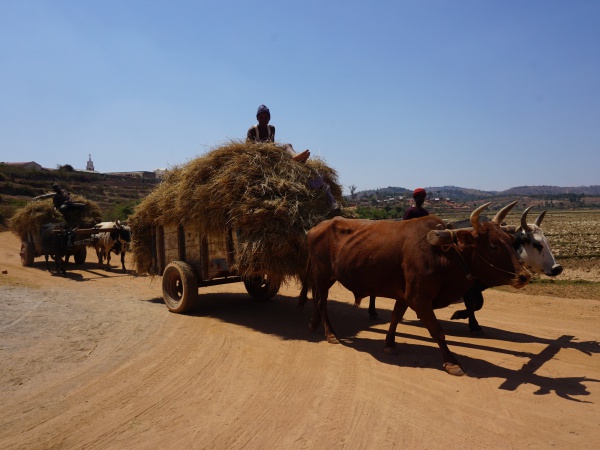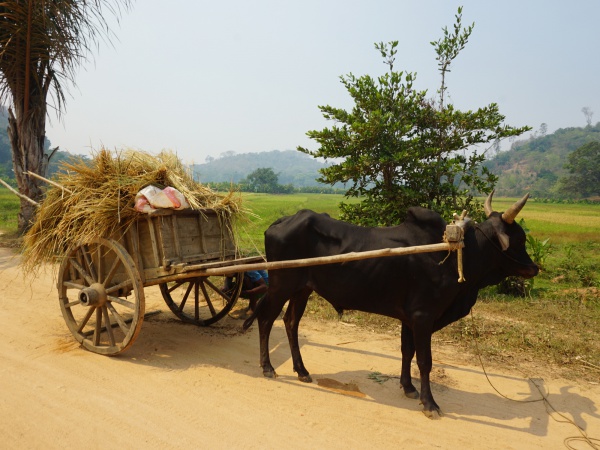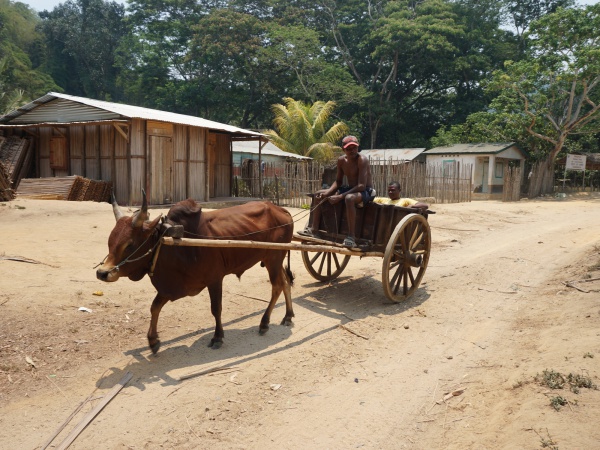Difference between revisions of "Zebu cart"
CampMaster (talk | contribs) |
CampMaster (talk | contribs) |
||
| Line 1: | Line 1: | ||
| − | '''It's | + | '''It's just sunrise at the Sambirano crossing, there's a bit of a traffic jam, not by motor vehicles but by ox-powered carts delivering freshly harvested crops from the countryside to the central marketplace of Ambanja.''' |
[[File:Zebu cart 001.jpg|600px]] | [[File:Zebu cart 001.jpg|600px]] | ||
| − | Innumerable zebu carts | + | Innumerable zebu carts exist in and around Ambanja, the region, and across Madagascar. |
Dozens of zebu cart workshops exist in Ambanja. | Dozens of zebu cart workshops exist in Ambanja. | ||
| − | One typical workshop, | + | One typical workshop, by Mr Theodore, <!-- 032 49 341 77)--> in the town centre, employs six skilled wood workers assembling about 50 carts per year, always in a same design and model. Everything is done manually without electricity and powder tools. A cart takes about a week to produce and costs 1,800,000 (about USD 400). |
| − | These humble two-wheeled vehicles are as relevant today as they were hundreds of years ago providing an indispensable transport | + | These humble two-wheeled vehicles or simply charettes as they are known are as relevant today as they were hundreds of years ago, providing an indispensable form of transport by farmers in distributing their agricultural crops. Hopefully the tradition of these eco-friendly vehicles remain, as they help keep cars and air-pollution to a minimum. |
[[File:Zebu cart 003.jpg|600px]] | [[File:Zebu cart 003.jpg|600px]] | ||
Revision as of 05:50, 17 August 2024
It's just sunrise at the Sambirano crossing, there's a bit of a traffic jam, not by motor vehicles but by ox-powered carts delivering freshly harvested crops from the countryside to the central marketplace of Ambanja.
Innumerable zebu carts exist in and around Ambanja, the region, and across Madagascar.
Dozens of zebu cart workshops exist in Ambanja.
One typical workshop, by Mr Theodore, in the town centre, employs six skilled wood workers assembling about 50 carts per year, always in a same design and model. Everything is done manually without electricity and powder tools. A cart takes about a week to produce and costs 1,800,000 (about USD 400).
These humble two-wheeled vehicles or simply charettes as they are known are as relevant today as they were hundreds of years ago, providing an indispensable form of transport by farmers in distributing their agricultural crops. Hopefully the tradition of these eco-friendly vehicles remain, as they help keep cars and air-pollution to a minimum.






